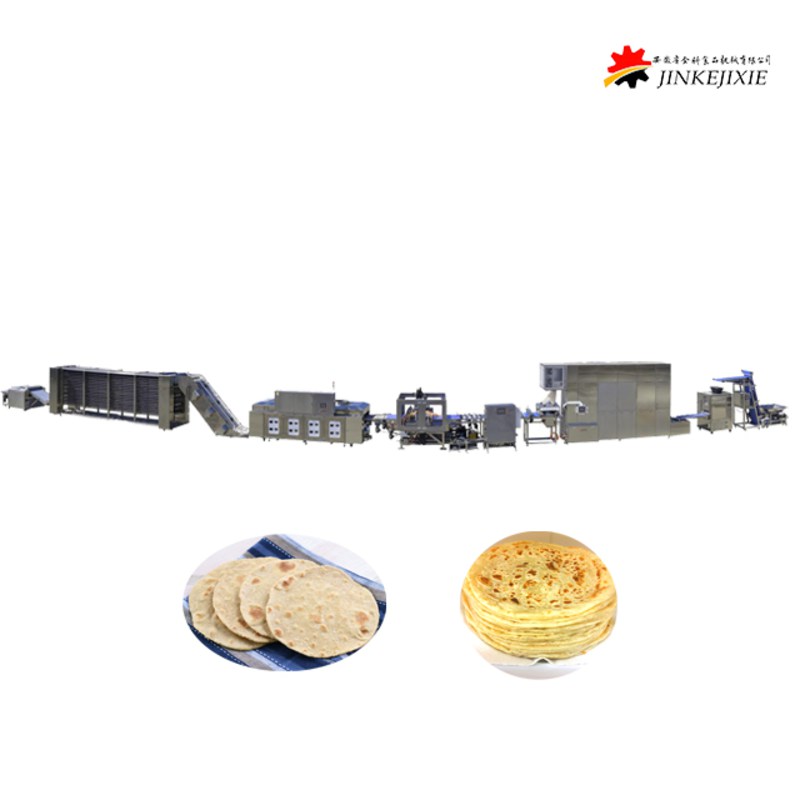Overview
The system integrates multiple stages—dough preparation, portioning, rolling, cooking, and stacking—into a seamless workflow. Its modular design allows for easy customization to meet varying production volumes, from small-scale restaurants to large industrial plants. The line ensures uniform thickness, perfect roundness, and authentic texture by leveraging precision rollers, intelligent temperature control, and a gravity-fed dough supply system. This not only reduces waste but also maintains the soft, pliable nature of chapatis that consumers demand.
Features
Fully Automated Dough Handling:
Equipped with a high-precision dough divider that portion sizes with an accuracy of ±1%, ensuring uniform chapatis every time.
Gravity-fed conveyor system eliminates manual intervention, reducing the risk of contamination and improving workflow efficiency.
Adjustable Rolling & Shaping:
Twin rollers with variable gap settings (0.5mm–3mm) accommodate different chapati thickness preferences, from thin, crispy variants to thick, fluffy ones.
Non-stick roller surfaces prevent dough sticking, ensuring clean operation and easy maintenance.
Intelligent Cooking Module:
High-speed infrared heating plates with adjustable temperature control (150°C–300°C) ensure even cooking and consistent browning.
Real-time monitoring system detects undercooked or overcooked chapatis, automatically adjusting cooking time for optimal results.
Automatic Stacking & Packaging Integration:
Gentle robotic arm stacking minimizes breakage and ensures neat piles for easy packaging.
Compatible with optional packaging modules for fresh or frozen distribution, including vacuum sealing and date labeling.
User-Friendly Interface:
Touchscreen control panel with intuitive settings for quick parameter adjustments (thickness, cooking speed, portion size).
Self-diagnostic system alerts operators to maintenance needs or malfunctions, reducing downtime.
Application
Commercial Kitchens: Ideal for restaurants, cafes, and catering services that serve chapatis as a staple, enabling high-volume production during peak hours.
Food Processing Plants: Suitable for large-scale manufacturers producing retail-packaged chapatis, both fresh and frozen, to meet supermarket and wholesale demands.
Institutional Canteens: Schools, hospitals, and corporate cafeterias benefit from consistent quality and rapid production to feed large groups efficiently.
Export-Oriented Businesses: Meets international food safety standards (FDA, CE) for exporting chapatis to global markets, ensuring compliance with strict quality regulations.
Faq
Q: What is the minimum/maximum chapati diameter the line can produce?
A: The line can produce chapatis ranging from 10cm to 20cm in diameter, adjustable via the control panel. Custom configurations for larger sizes are available upon request.
Q: Can the line handle gluten-free or whole wheat dough?
A: Yes, the robust dough handling system is compatible with various flours, including whole wheat, gluten-free blends, and doughs with added fibers or grains.
Q: How much space does the standard production line require?
A: The compact model occupies 8m x 2m, while larger industrial lines may require 15m x 3m. Our team provides site-specific layout designs to optimize space utilization.
Q: What is the energy consumption per hour?
A: Energy usage depends on production speed, but the average is 15–20 kWh for the standard line, featuring energy-efficient heating elements and low-power motors.
























